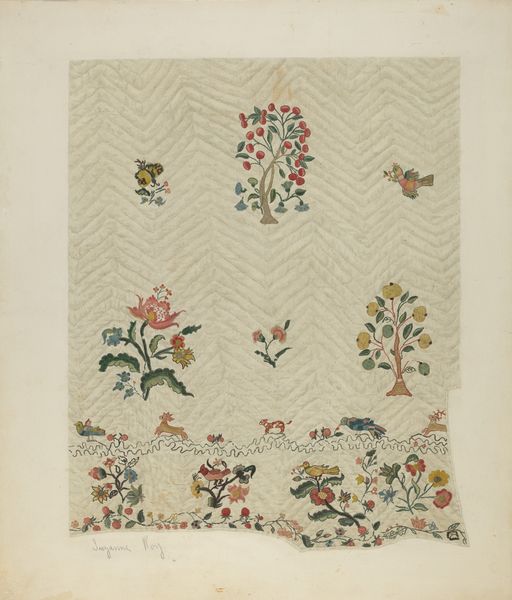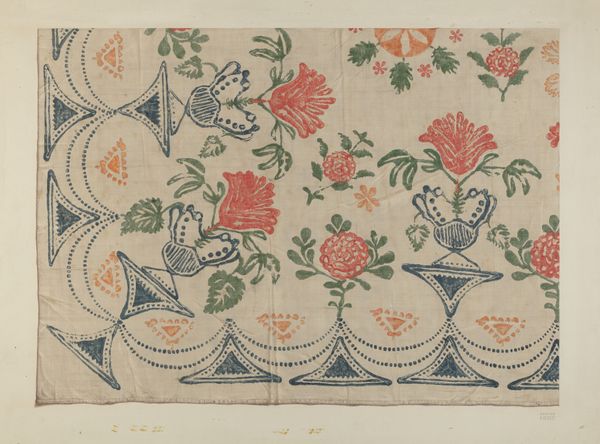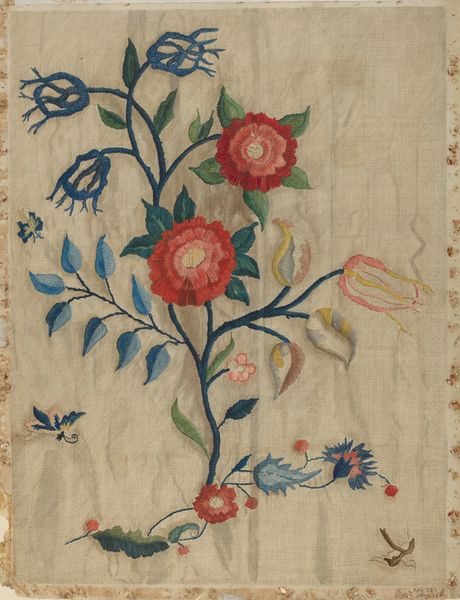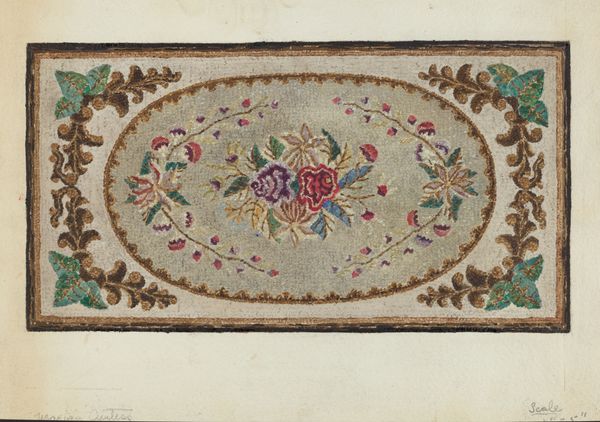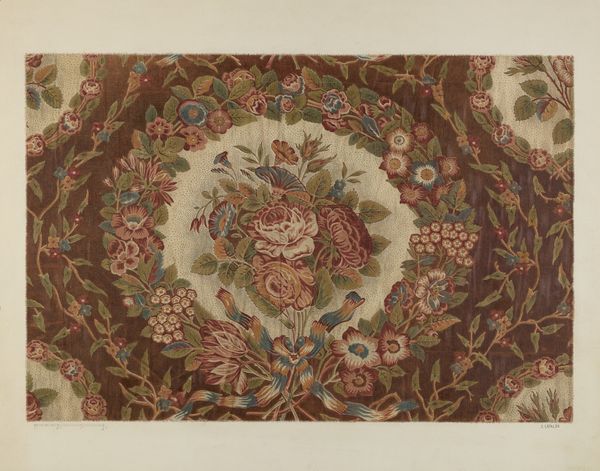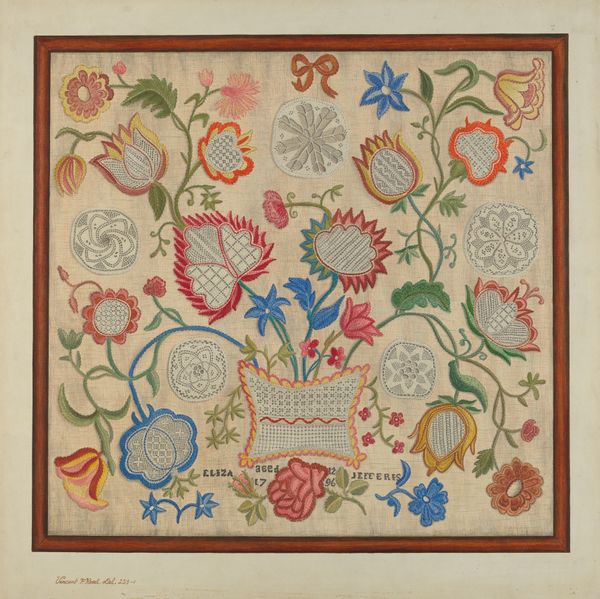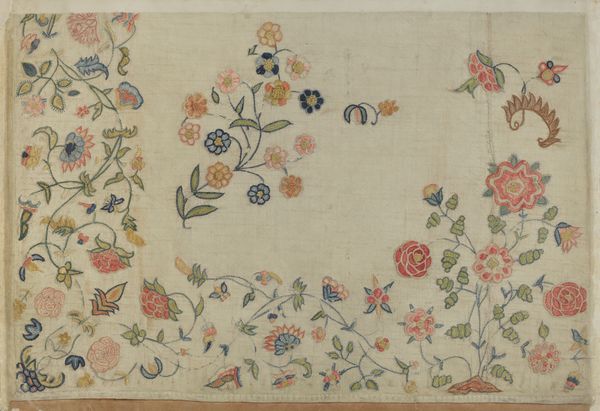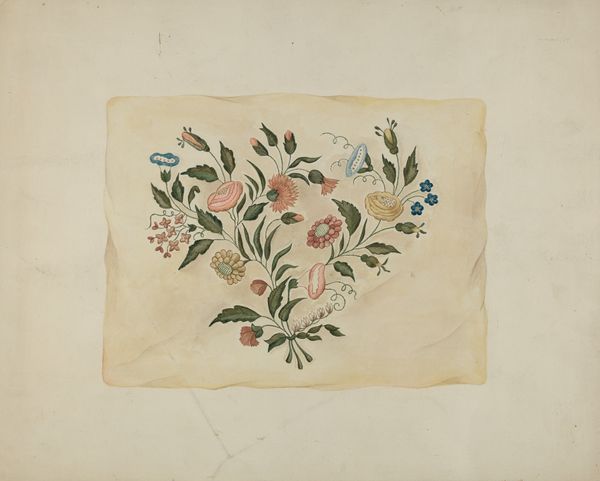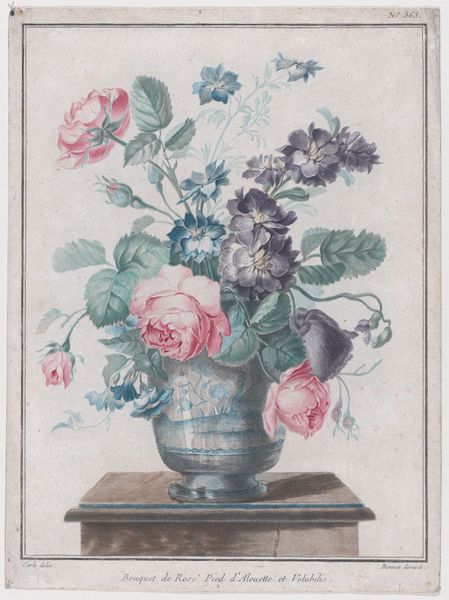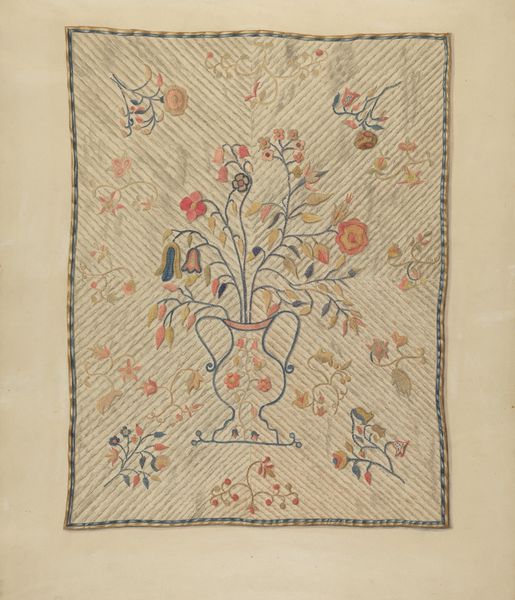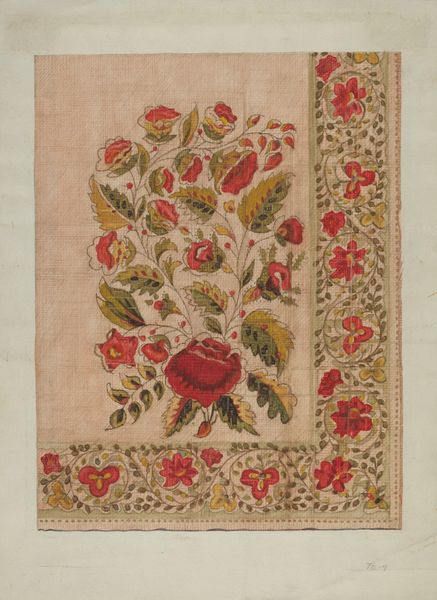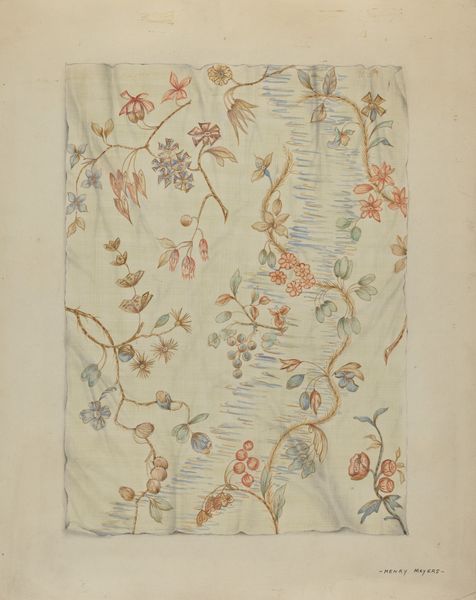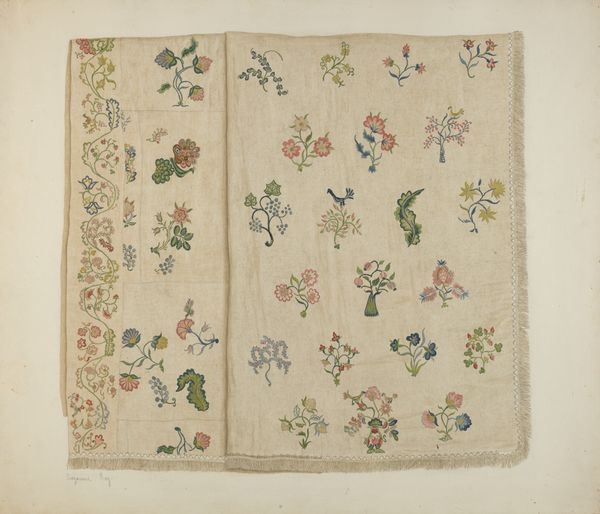
drawing, fibre-art, silk, print, textile
#
drawing
#
fibre-art
#
water colours
#
silk
# print
#
landscape
#
textile
#
flower
#
handmade artwork painting
#
united-states
#
decorative-art
#
watercolor
Dimensions: 27 5/8 x 29 1/2 in. (70.2 x 74.9 cm)
Copyright: Public Domain
Curator: Before us is a captivating “Quilt Center,” created sometime between 1787 and 1793, its authorship attributed to John Hewson. This textile artwork residing at the Metropolitan Museum of Art features a blend of silk, print, drawing, and watercolour. Editor: It’s utterly charming. There’s a delightful symmetry at play, almost a naive formality, yet it radiates a gentle, inviting aura. The pale ground emphasizes the stylized birds and floral arrangements. Curator: Precisely! The visual language employed points to popular motifs of the late 18th century. Observe the prominent vase brimming with blooms, a central emblem that anchors the piece structurally, with repeated groupings around the central design, surrounded by a constellation of butterflies. Editor: The vase is a significant form in itself—suggestive of classical urns, but rendered with a softer touch. Considering it was made during a period of great political uncertainty with the recent Revolution, vases are linked with ideas of domesticity and perhaps even hope for the blossoming of the new republic. The botanical and animal designs can signal peace and serenity. Curator: Indeed. The intentional use of watercolour on silk adds a layer of delicacy. It softens the rigid geometric layout inherent in the grid like design. I'm particularly intrigued by the restrained color palette. The juxtaposition of the muted reds, creams, and blues creates an interesting tension against the subject of botanical vitality and natural energy. Editor: And while there's symmetry, it's not slavishly followed, is it? The butterflies and birds aren’t identical; they vary, as if each creature has its individual personality and a little rebellion, which might be a commentary of a need for uniqueness within a standardized or conventional existence. Curator: I concur; those subtle variations introduce a dynamism that saves it from becoming static, transforming it into a living, breathing entity that connects to natural order but breaks free. Editor: It reminds us how art can function not only as decoration but also as a cultural touchstone. These motifs offer such intriguing avenues for thinking about American cultural aspirations in the late 18th century. Curator: An excellent point. It pushes us to consider how aesthetic choices, even in something as seemingly straightforward as a quilt, become potent carriers of meaning. Editor: Exactly, and in this instance, quite a compelling tapestry of aspiration, structure, and nuanced symbolism.
Comments
No comments
Be the first to comment and join the conversation on the ultimate creative platform.
